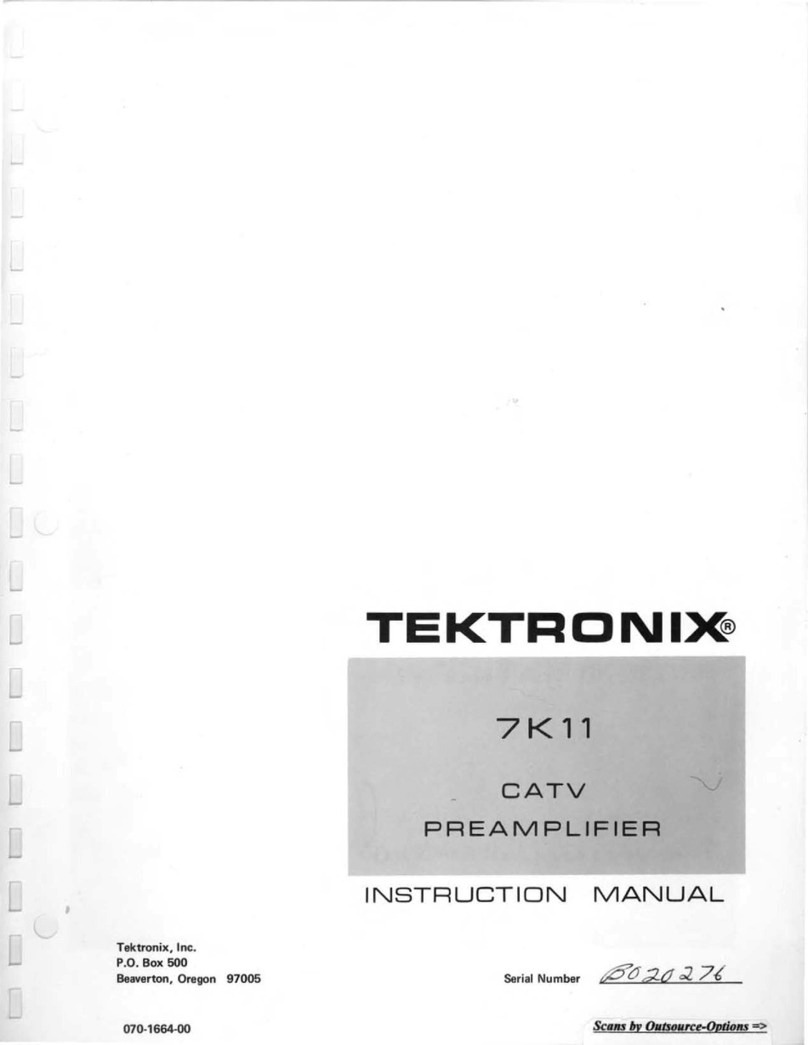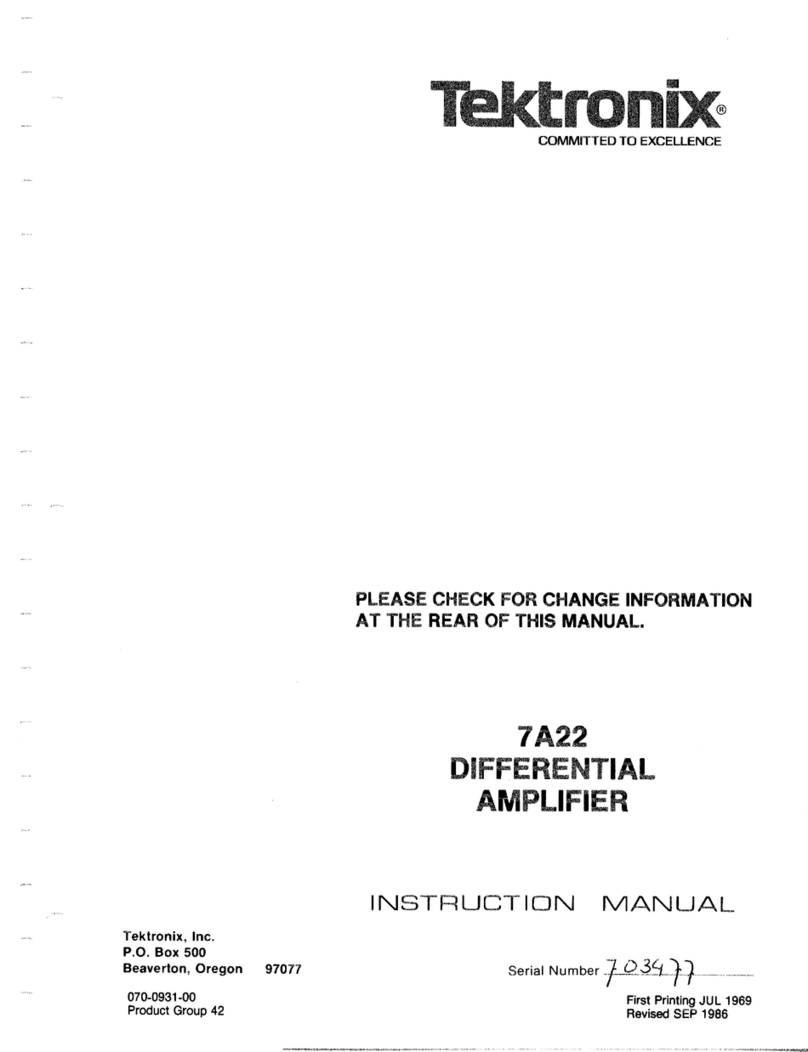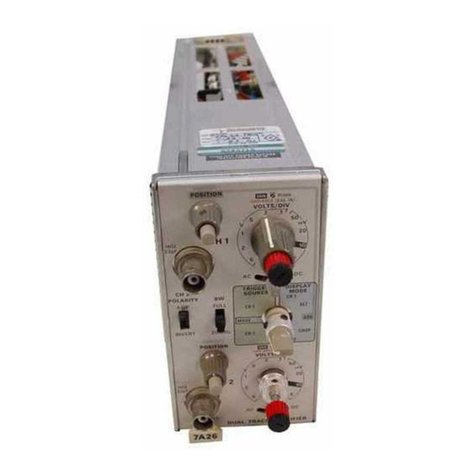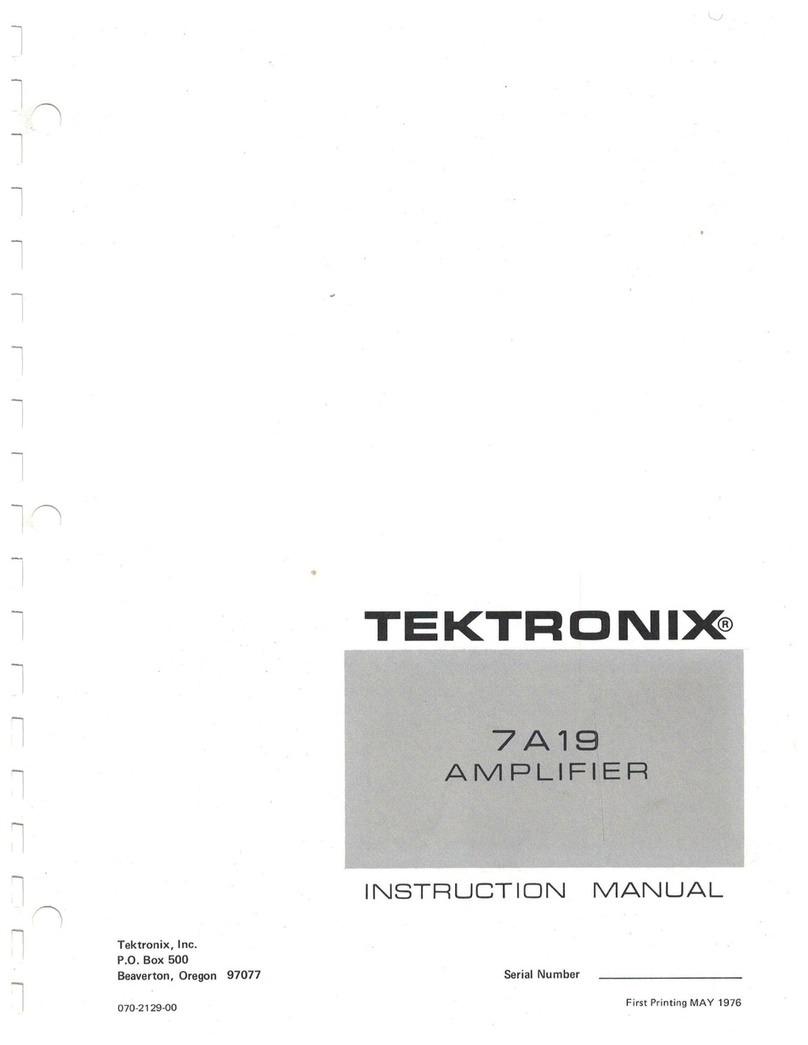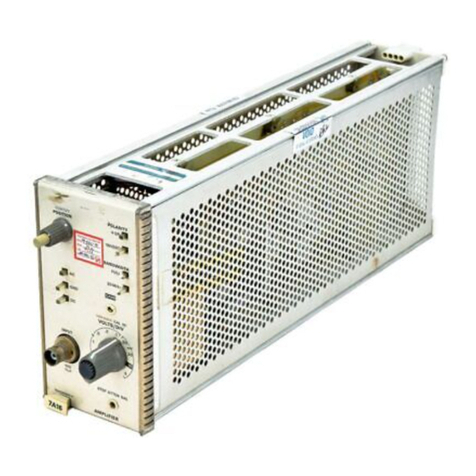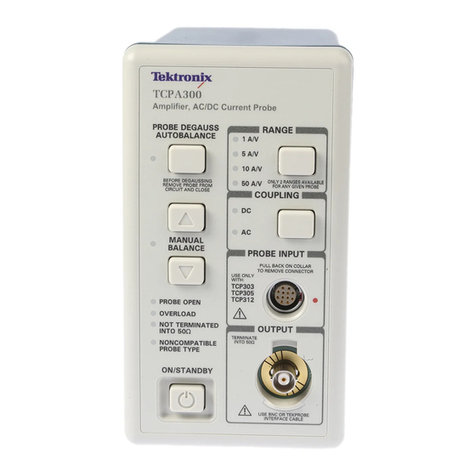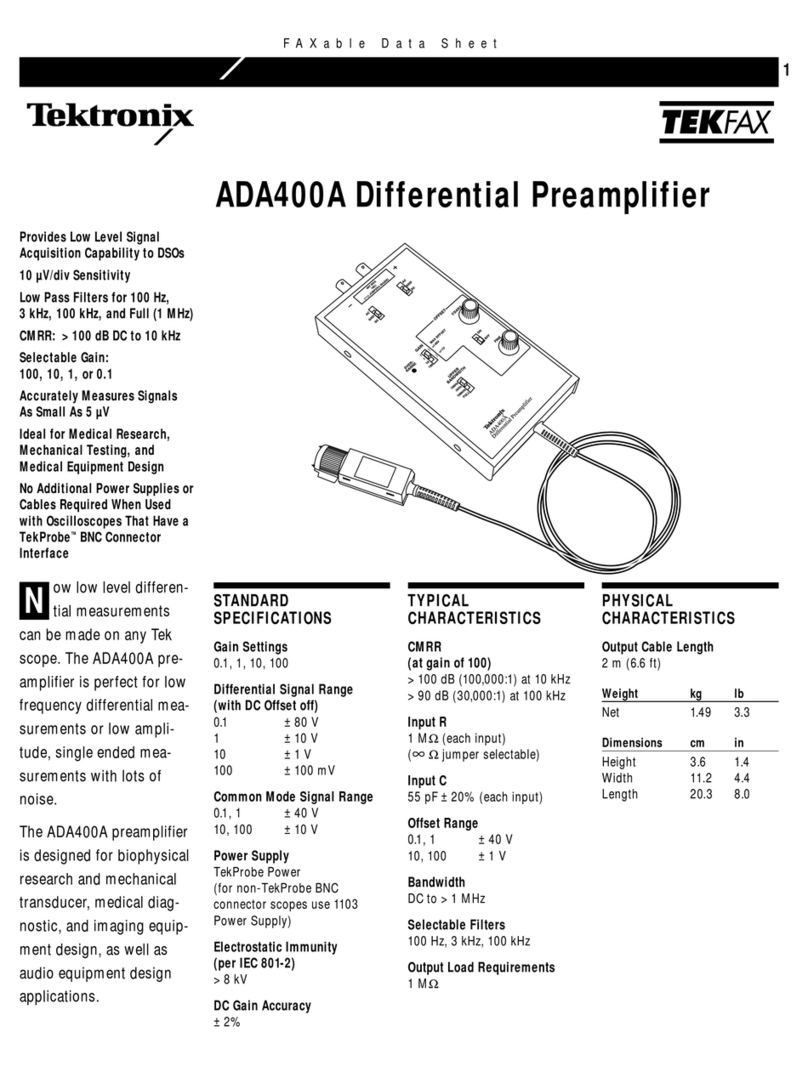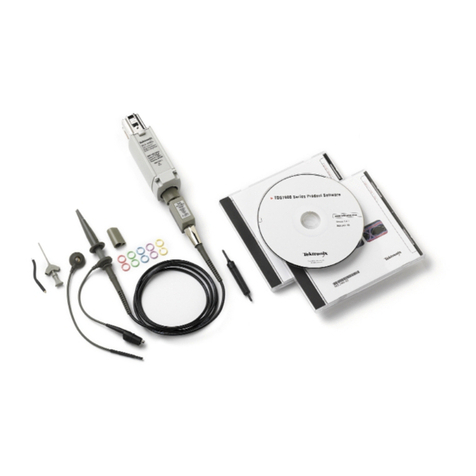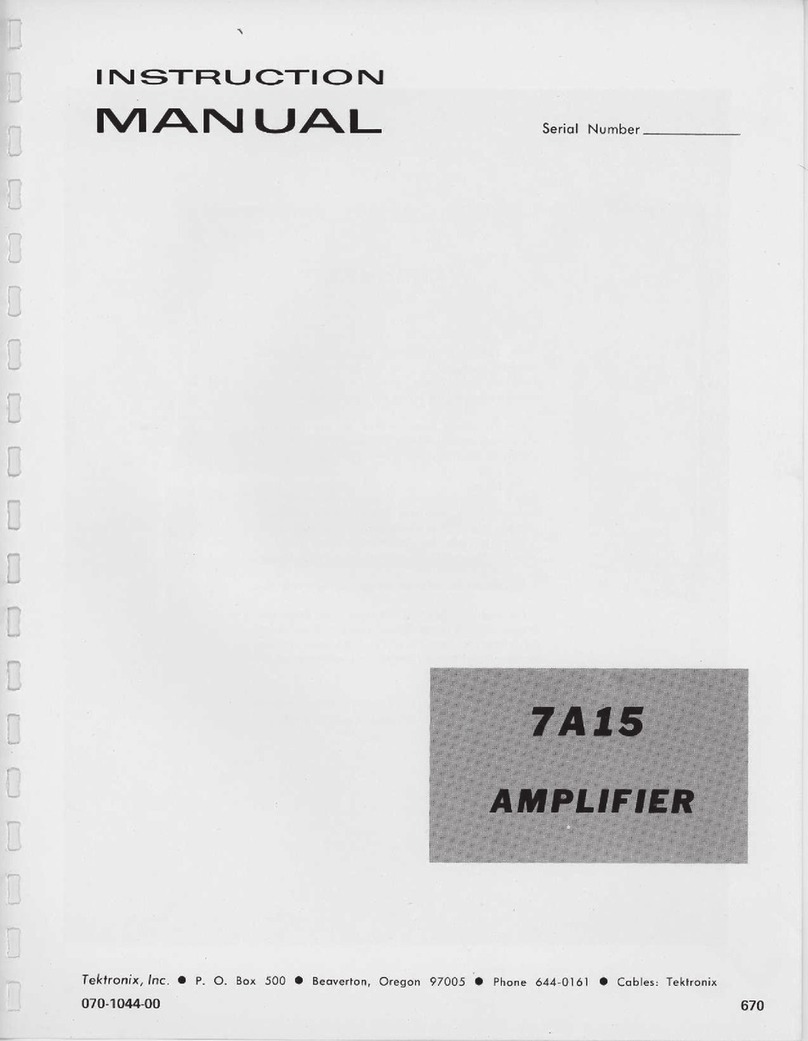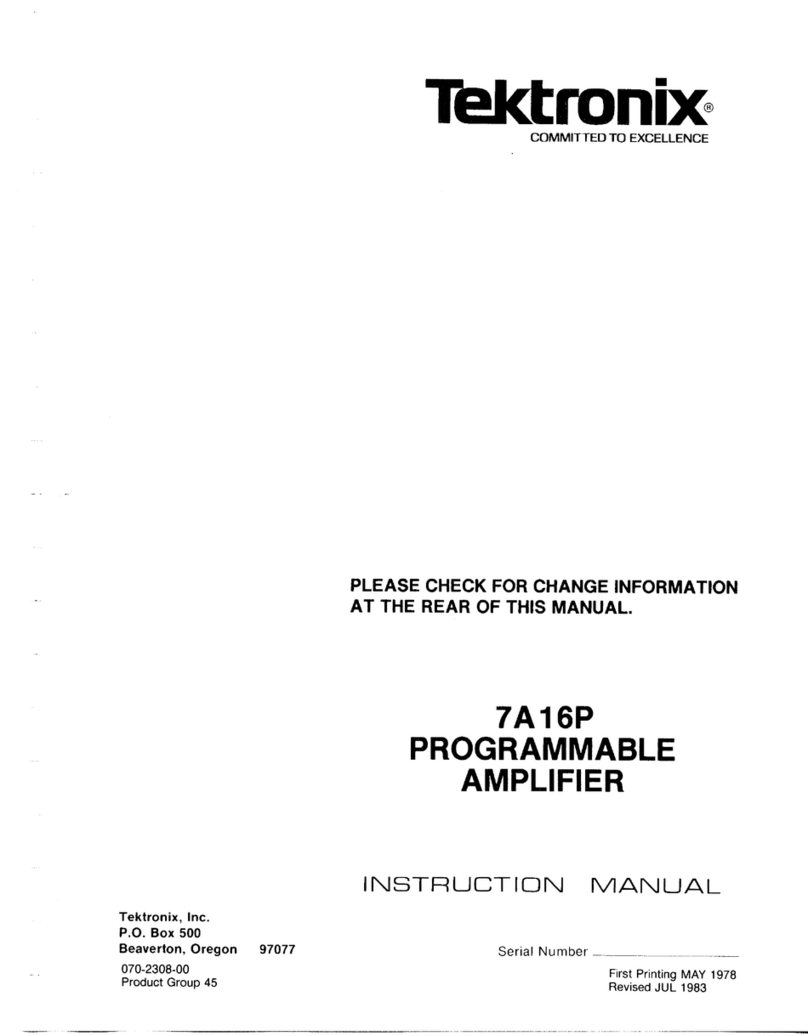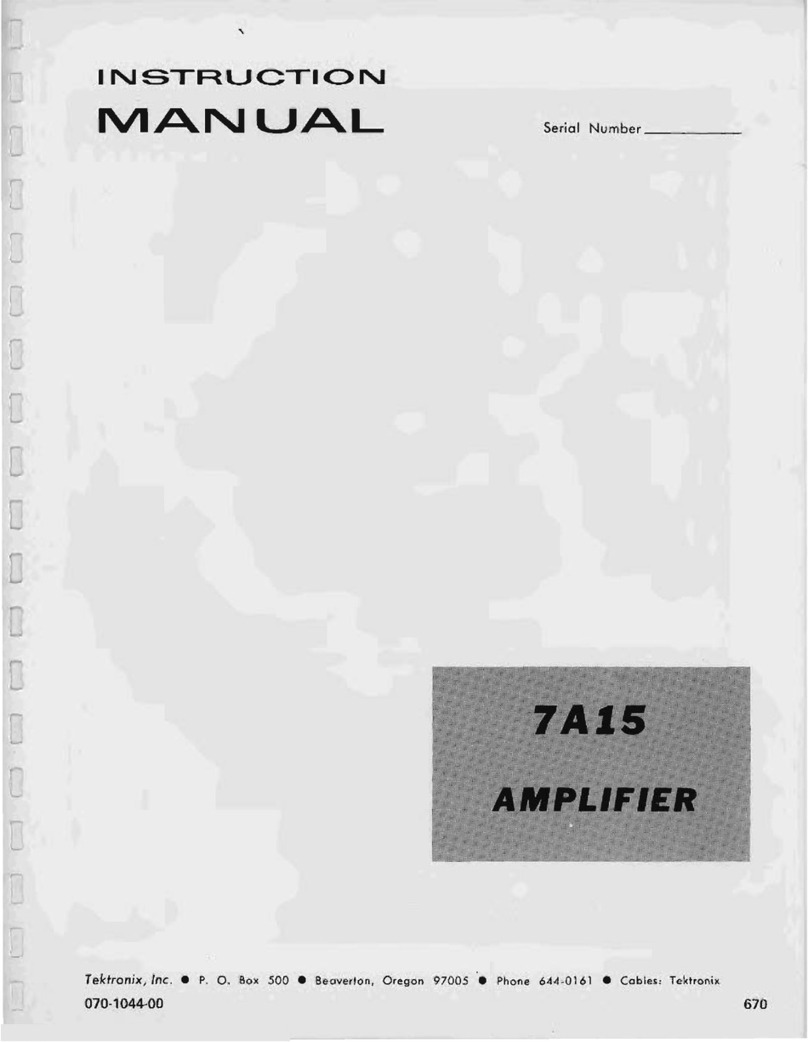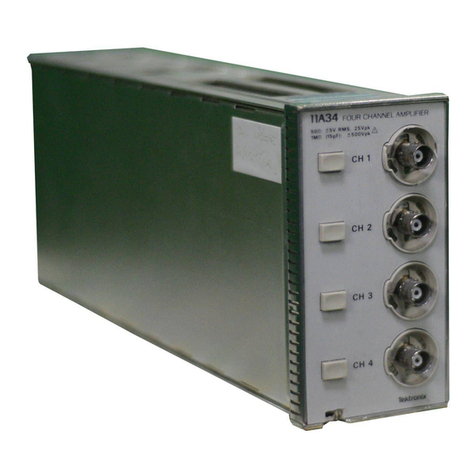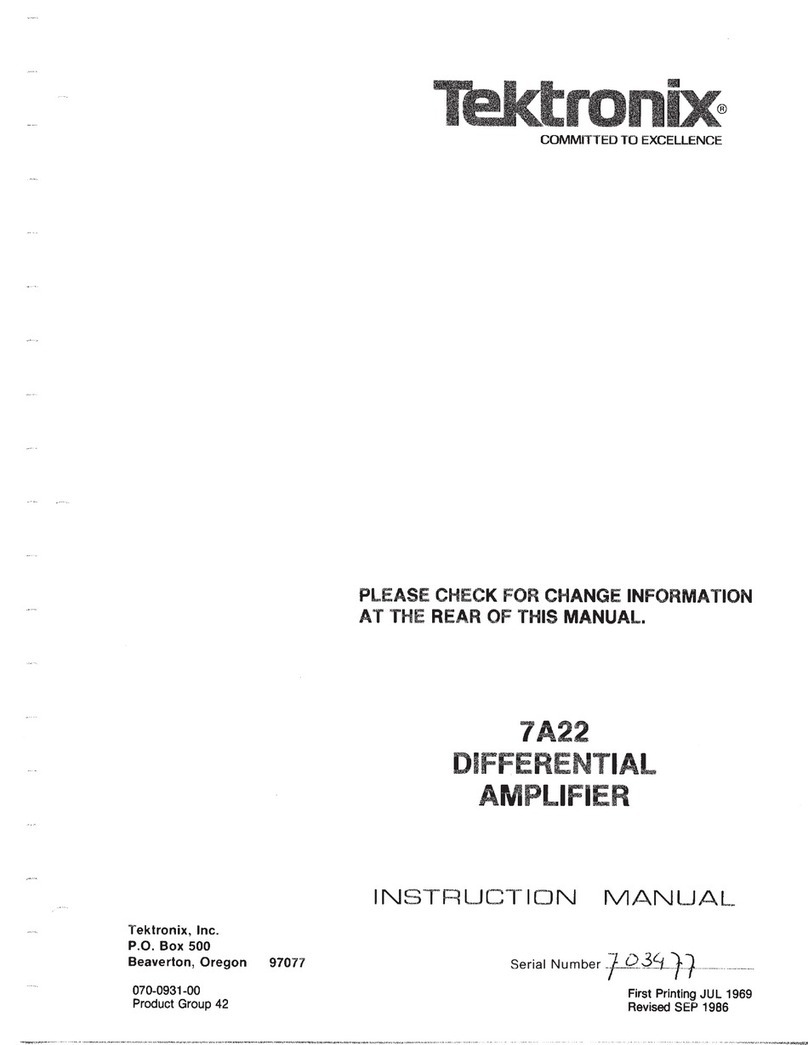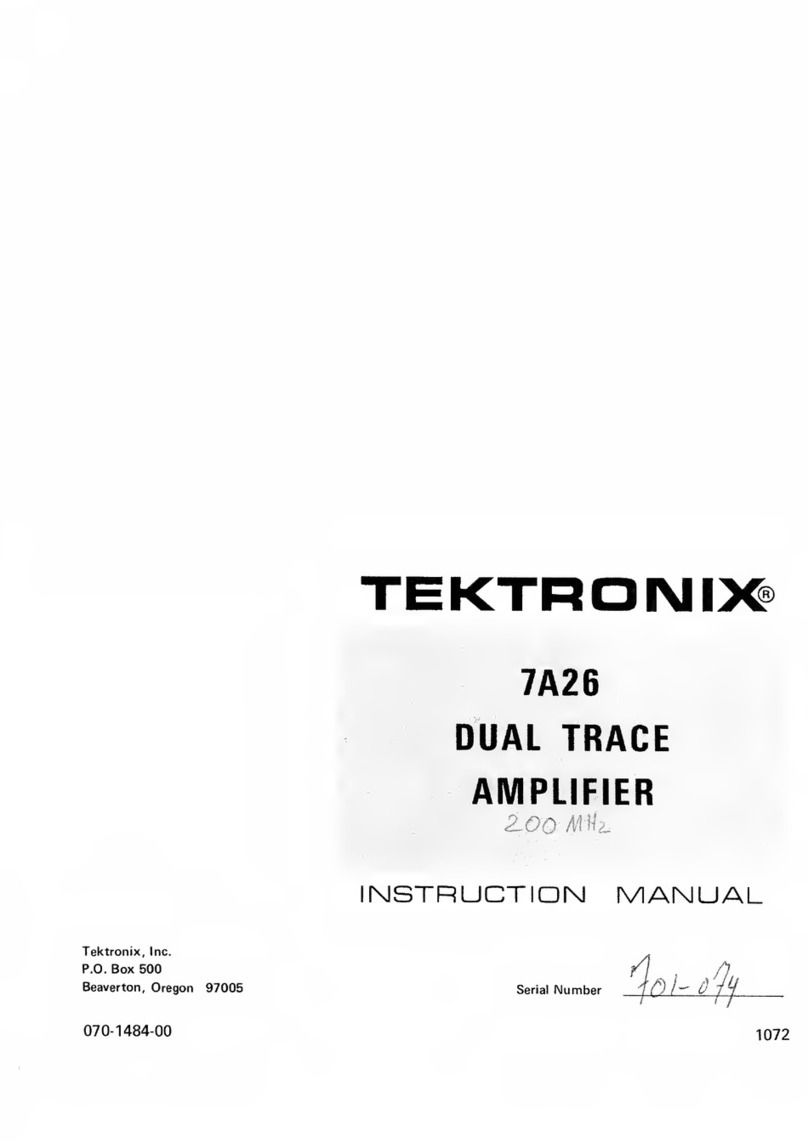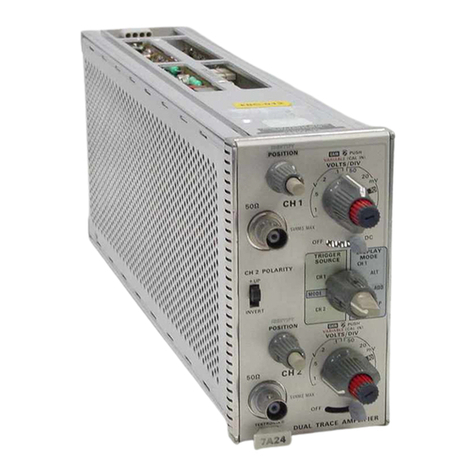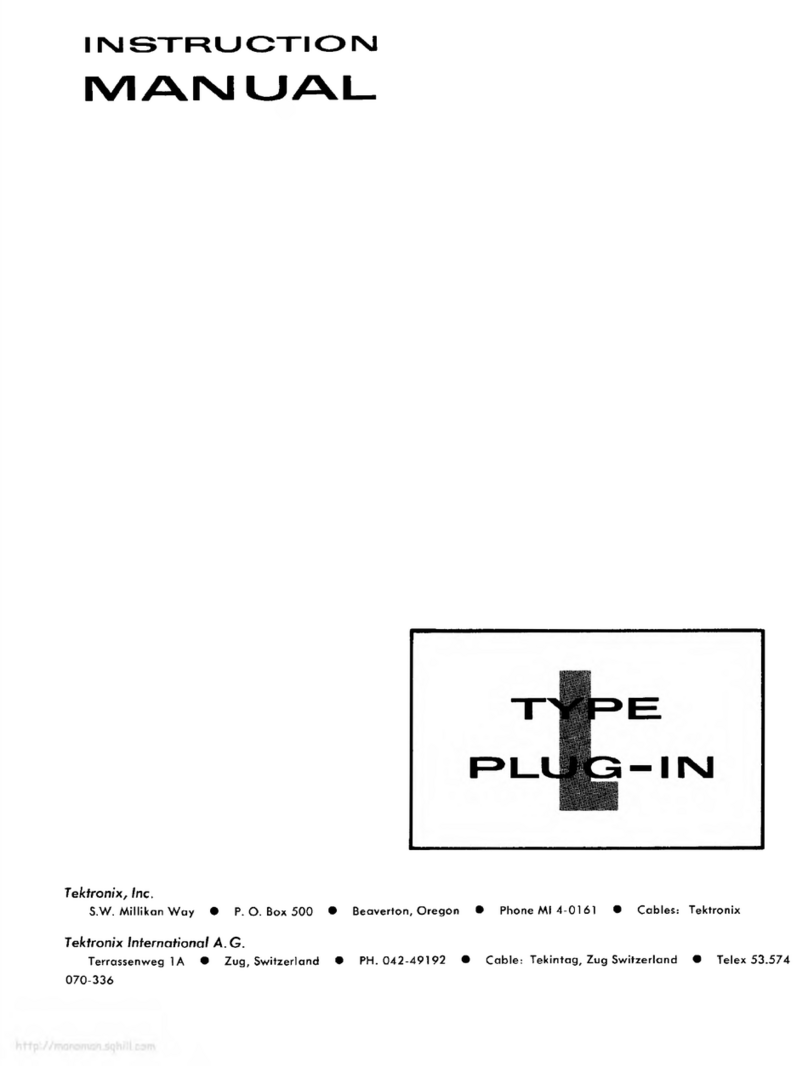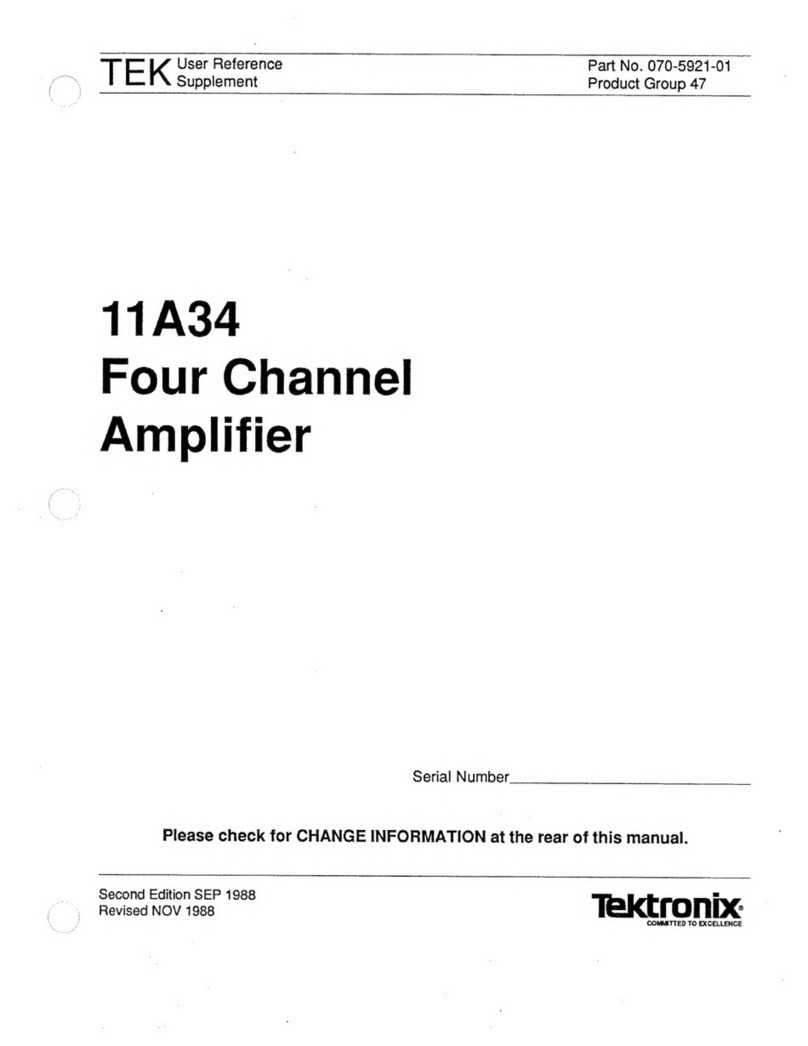Section 1—7A29
GENERAL INFORMATION
INTRODUCTION
The Instruction Manual is divided into the following main
sections:
Section 1—General Information contains instrument
description, electrical specifications, environmental
characteristics, standard and recommended
accessories, installation, and packaging for shipment
instructions
Section 2Operating Instructions contains
information relative to operating and checking the
instrument operation.
WARNING
THE REMAINING PORTIONS OF THIS
INSTRUCTION MANUAL CONTAIN SERVIC-
ING INSTRUCTIONS THESE SERVICING
INSTRUCTIONS ARE FOR USE BY QUALIFIED
SERVICE PERSONNEL ONLY. TO AVOID
ELECTRIC SHOCK OR OTHER PERSONAL
INJURY. DO NOT PERFORM ANY SERVICING
OTHER THAN THAT DESCRIBED IN THE
OPERATING INSTRUCTIONS UNLESS YOU
ARE QUALIFIED TO DO SO.
Section 3—Theory of Operation contains basic and
general circuit analysis that may be useful for
servicing or operating the instrument.
Section 4Maintenance describes routine and
corrective maintenance procedures with detailed
instructions for replacing assemblies, subassemblies,
and individual components
Section 5~Calibration contains procedures to check
the operational performance and electrical
characteristics of the instrument Procedures also
include methods for adjustment of the instrument to
meet specifications.
Section 6- Instrument Options contains adescription
of available options and locations of incorporated
information for those options.
Section 7Replaceable Electrical Parts contains
information necessary to order replaceable parts and
assemblies related to the electrical functions of the
instrument.
Section 8— Diagrams and Circuit Board Illustrations
includes detailed circuit schematics, locations of
assembled boards within the instrument, voltage and
waveform information, circuit board component
locators, and locations of adjustments to aid in
performing the Adjustment and Performance Check
portions of the Calibration procedure.
Section 9Replaceable Mechanical Parts includes
information necessary to order replaceable
mechanical parts and shows exploded drawings which
identify assemblies.
INSTALLATION
INITIAL INSPECTION
Dangerous voltages exist inside the
instrument To avoid electrical-shock hazards,
operating personnel must not remove
protective instrument covers. Component
replacement and internal adjustments must
be made by qualified service personnel only.
This instrument was inspected both mechanically and
electrically before shipment from the factory and it
should be free of mars or scratches and should meet or
exceed all electrical specifications To confirm this,
inspect the instrument for physical damage incurred in
transit. Test the electrical performance by following the
Operators Checkout Procedure in section 2and then
refer qualified service personnel to the Performance
Check Procedure in this Instruction Manual If there is
damage or deficiency, contact your local Tektronix Field
Office or representative.
OPERATING INFORMATION
'CAUTION '
lo prevent instrument damage, plug in units
should not be installed or removed without
first turning off the mainframe power
The 7A29 is calibrated and ready for use as received It
can be installed in any compartment of Tektronix 7000-
series oscilloscopes, but is intended principally for use in
vertical plug-in compartments. To install, align the upper
and lower rails of the 7A29 with the oscilloscope tracks
and insert. The 7A29 front panel will be flush with the
1-1
